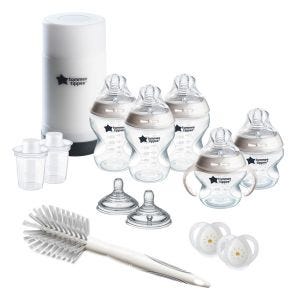
This is a demo store. No orders will be fulfilled.
Subscription orders can be cancelled at anytime. Free delivery on all subsequent subscription orders. Find out more about subscriptions.
They’re easy and fuss free
Your products are automatically sent to you
You save up to 10% when you sign up for a subscription
You can cancel at any time

Find some answers to the most frequently asked questions about our Transition Sippie Trainer Cup.
Of course! Our cups are suitable for sterilization by steam (electric and microwave), by boiling (5 minutes) and by cold water tablet / liquid solution. The only exceptions are our Insulated Sippee and Straw cups, which are only suitable for cold water sterilization. Stay safe people!
Tomatoes are usually to blame! If you wash your cup alongside pans or bowls that have had strong colored sauces in, like tomato or carrot, some of the color can transfer. This can happen in the sink as well as the dishwasher. To keep your cups looking lovely and new, put them at the front of the queue if you’re washing up by hand, and on the top shelf if you’re using a dishwasher. This usually results in fewer undesirable stains!
In an ideal world, you’d warm your little one’s drink over a stove, stirring to ensure consistent heat throughout, then you’d pour it into their cup. In the real world, if your little one wants a warm drink, you’re probably going to pour the milk or juice into their cup and pop it in the microwave. The good news is that this will not damage our cups (apart from the insulated cups - they don’t get on well with microwaves). The bad news is that microwaves can cause random hot spots, and these are not nice for little ones to swallow. So, if you do use the microwave, please leave the lid off to warm, then pop it on and give the cup a really good shake or swirl before handing it over.
We’re afraid you can’t buy lids separately, but the good news is that all our cups have interchangeable lids, so it’s easy to swap them around. The only exceptions are our meal time trainer and filter bottle - these have such a distinct design that their lids don’t fit other cups.
Of course! Pop them on the top shelf though. As with all plastic things they can get a bit stained and yucky-looking in the dishwasher (blame that bolognese sauce or carrot soup you had last night). If they do get discoloured there’s nothing to worry about - they’re perfectly safe, they just don’t look as good!
The best place for the valve is at the top, near your baby's nose.
Of course! Pop them on the top shelf though. As with all white and clear plastic things they can get a bit stained and yucky-looking in the dishwasher (blame that bolognese sauce or carrot soup you had last night). If they do get discoloured there’s nothing to worry about - they’re perfectly safe, they just don’t look as inviting!
This probably means air is not flowing smoothly through your bottle. But don’t worry, it’s easy to fix. You just need to re-open the slit at the tip of the valve by gently manipulating it between your finger and thumb. You should see it open easily, and air can then flow again, preventing the teat from collapsing. To be clear, this shouldn’t happen often. It is due to the specially designed silicon we use - it is so soft and sheer that it can sometimes stick the slit together if the teat isn’t used for a little while. Nothing to worry about:)
It’s worth a quick thought that if your little one is sucking really hard on the nipple, they may want more liquid than they’re able to get. If that’s the case, you could try a variflow teat or jump up to the the next flow rate.